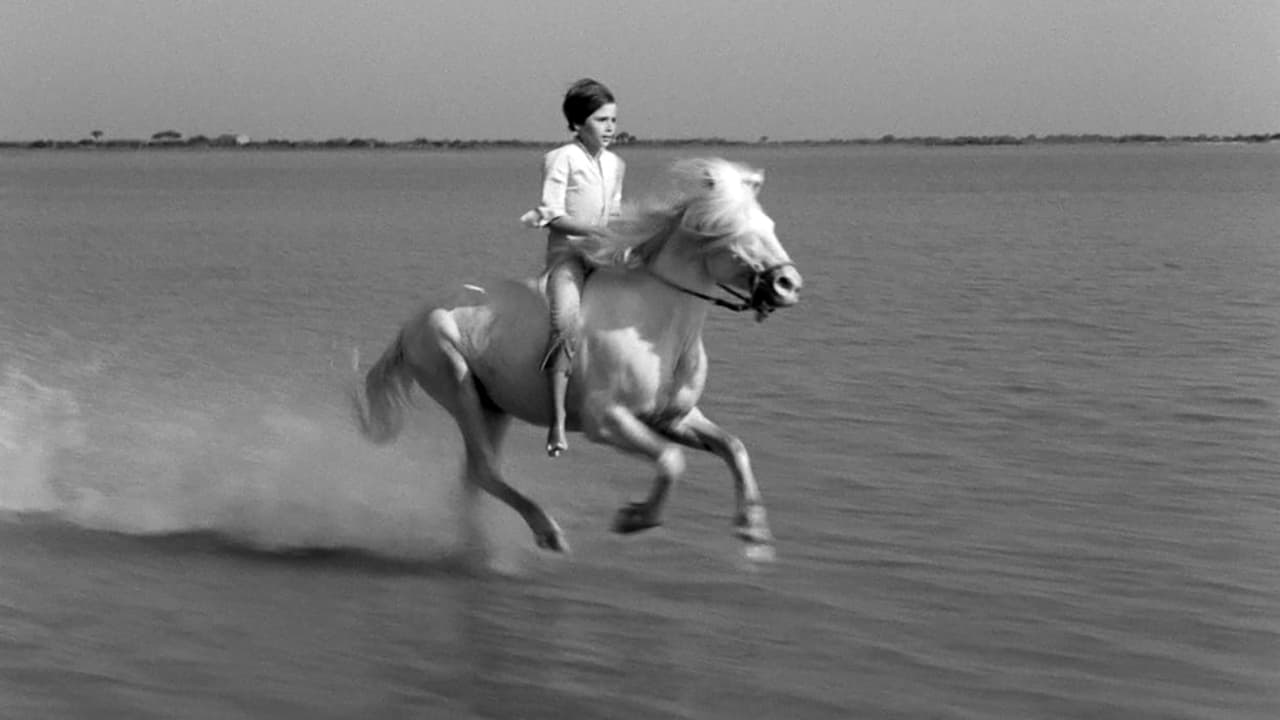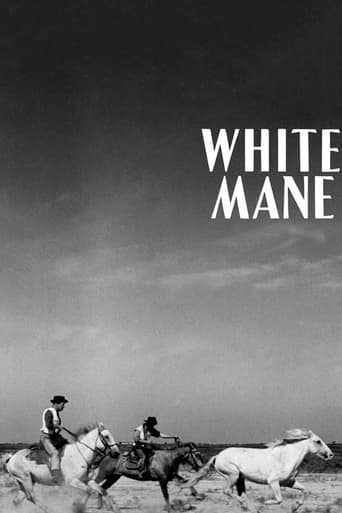



Intense, gripping, stylish and poignant
Am I Missing Something?
It’s an especially fun movie from a director and cast who are clearly having a good time allowing themselves to let loose.
View MoreOne of the film's great tricks is that, for a time, you think it will go down a rabbit hole of unrealistic glorification.
View More"White Mane" was directed by the French filmmaker Albert Lamorisse, who also made the better-known "The Red Balloon" from three years later. The two films have several things in common, apart from the fact that both feature the name of a colour in their title. Both are very short ("White Mane", the longer of the two, only runs to forty-seven minutes) and have little in the way of dialogue. Both are centred upon the adventures of a young boy who finds an unusual playmate (a horse here, a seemingly- sentient balloon in the later film). Both are told in the form of a fable rather than of a realistic story, and have an enigmatic ending which can be interpreted symbolically.There are, however, also a number of differences. "The Red Balloon" was set in Belleville, a working-class district of Paris. It was filmed in colour, but the colours, apart from the red of the balloon itself, are dull and muted, in keeping with the gritty urban setting. "White Mane", by contrast, was shot in black-and-white on location in a remote rural area, the marshes of the Camargue in the South of France.The Camargue is noted for its herds of free-roaming wild horses, and the film tells the story of one of them, a white stallion called White Mane (Crin Blanc in French). A group of ranchers persistently try to capture him but White Mane, who distrusts men, always manages to escape. The only human who can tame him is a boy named Folco who lives in the marshes with his fisherman grandfather and younger brother.The story is a simple one and the film has always been popular with children. As with "The Red Balloon", however, there is plenty of symbolism for adult audiences who like that sort of thing. The wild horse becomes a symbol of freedom; he resists the ranchers, who try to capture him by force, but he will submit to Folco who captures him through love. There may also be a specifically religious meaning behind the films, which starts with the colour-references in the titles; in Christianity red is the colour of martyrdom and white that of purity. Religious symbolism can be attributed to the endings of both films; here White Mane takes Folco through the sea (the waters of baptism?) to an island where "horses and men can always be friends", a possible reference to an afterlife.Such attempts to attribute symbolic meanings to films, especially children's films, will always be controversial and there will always be ample grounds for disagreement about such matters. One area, however, which I suspect will give rise to little controversy is the film's visual impact. Lamorisse's clean, vibrant black-and-white photography is absolutely masterly, revealing the wild, lonely beauty of the marshes. It is the sort of film which one could, if one were in the mood, watch simply as a succession of striking images, without giving much thought either to the story or to its underlying meaning. In this respect I felt that "White Mane" excelled even the high standard of "The Red Balloon". 9/10
View MoreApparently there are two versions of this shorty: a 47-minute version and a 38-minute version. But I can only find the one with 38 minutes, where is the other one, if it really exists? Plus, if there really is a longer version, I wonder what it contains that the shorter one doesn't.There is a lot to like about this short, especially for those who love horses. Without being a huge fan of horses, I like them and admire their formidable strength, imponence and pride.This small film is very well-made and filmed. The black and white suits it so nicely. The rural scenario is gorgeous, thanks to the natural beauty of Camargue.This is the story of Crin Blanc, a white stallion that is wild, fearless, carefree, runs like the wind, despises humans, refuses to get caught and doesn't let anyone ride him. In other words, the lead horse is wild like all the other horses seen in it, however it is the leader of the herd. It is a nice-looking stallion but behind its beauty and elegance lies a fearsome leader, a proud and suspicious horse which doesn't like and trust in people and doesn't hesitate to look down on them with arrogance, a stubborn and determined horse which, more than never letting itself get caught, doesn't let itself get caught by nothing in this world. That is, until the day he meets a brave kid. The task is anything but easy, yet the boy quickly wins the heart and confidence of the majestic stallion, after some initial resistance and despite the strength of its wild instincts. Though very different from each other, Crin Blanc, the boy and the ranchers have one thing in common: their determination. My description might sound a bit of a criticism, but it's not. Good thing it is like that, otherwise it'd become another victim of human cruelty. While we never know why those four ranchers wanted to capture it for, we can assume that they'd make money out of it somehow, possibly in inhuman ways.Everything feels authentic in this short. For good and for bad. As a matter fact, certain scenes are pretty violent and even creepy.As with 'Le Ballon Rouge' (itself by Albert Lamorisse either), this one is silent most of the time but not completely wordless because some lines are delivered. This one's even got a little more dialog than 'Le Ballon Rouge'. Still, there aren't many dialogs, which means that to understand it without subtitles is not much of a problem, although it's always better having subtitles in order to understand it better.The ending is something of a mystery: do the kid and the horse die? At least that's what strongly implied in the narrator's words: «Crin Blanc took Folco to a land where horses and children can be friends forever.» Alain Emery is superb as the boy and his face and eyes are so expressive that they speak more than the few words and sounds he ever delivers.This little movie is aimed at those who likes quality films but also to anyone who is into animals. To love, trust, take care and have a friendship and physical contact with animals (whatever the animal is) and win their heart in return is one of the best sensations in the world. Anyone who loves animals (no matter the animal in question) knows what I'm talking about. I should talk, because I'm a sucker for animals myself.Title in Portugal: 'Crina Branca' (the Portuguese really lack the skills to do translations, don't they?).
View MoreEvery French pupil of the sixties or even the seventies knows "Crin-Blanc",one of the major works of Albert Lamorisse who used to make films aimed at the children's market: "Bim Le Petit Ane" "Le Voyage en Ballon" and "le Ballon Rouge" are of the same kind.The French critic remains tepid as far as they are concerned,but abroad all are praised as masterpieces of moving poetry.Let's take the golden middle:masterpieces,there are certainly not,but representative of an era ,the era of Doisneau's photographs and pupils in grey overall,they certainly are.Whereas "le Ballon Rouge " depicted a graying urban landscape,"Crin-Blanc" takes place in Camargue with its wild horses ,including ,the wildest of them all,"Crin-Blanc ".But the two movies have the same conclusion: both Folco and Pascal cannot live in the men's world and both escape from their world,one flew over Paris with his magic balloon and the other returned to the (new christening?) waters of the river with his mythical horse.
View MoreUnlike THE RED BALLOON, this movie lacks the emotional feel, but the same passion is still here. The only real difference between this and RED BALLOON, is that this is in black and white and in the countryside, not in the city. Both movies virtually have no dialogue at all. If you want to cry, see THE RED BALLOON.
View More